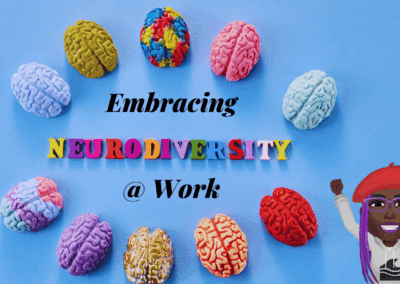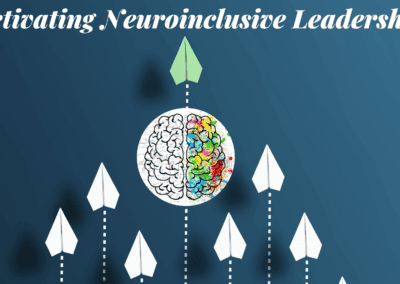Amid these myriad strategies, one has emerged and steadily gained prominence due to its multifaceted benefits – the implementation of Employee Resource Groups (ERGs). Often employee-led and voluntarily formed, these groups have become a cornerstone in shaping an organization’s culture and driving its performance. As I delve deeper into this topic, you will explore the concept of ERGs, their benefits to an organization, and how they have become pivotal in the modern business landscape.
What are ERGs, and How Do They Benefit Organizations?
ERGs are voluntary, employee-led groups that foster a diverse, inclusive workplace aligned with organizational mission, values, goals, business practices, and objectives. They bring together employees who share characteristics, experiences, or interests, such as gender, race, religion, sexual orientation, or professional aspirations.
Employee Resource Groups offer a plethora of benefits to organizations. They provide a platform for employees to voice their concerns, suggest ideas, and directly contribute to organizational policies. ERGs can also aid in talent acquisition, retention, and development, as they demonstrate the organization’s commitment to diversity, equity, and inclusion. Furthermore, ERGs can help improve customer insights and innovation by bringing diverse perspectives to the table.
Examples of Successful Employee Resource Groups
Successful Employee Resource Groups (ERGs) have significantly contributed to their organizations in the corporate landscape. For example, at TIBCO, the BLADE ERG focuses on employees who identify themselves as Black, Latinx, and Allies driving Equity. They provide opportunities for growth, mentorship, empowerment, community-building, and innovation through educational programming and resources.
Comcast NBCUniversal’s Veterans Network helps military veterans transition into the corporate world and drive innovation.
American Express Women’s Interest Network (WIN) ERG advances women through professional development, mentorship, and networking. Employee Resource Groups, when effectively implemented, contribute to organizational success and foster diversity, equity, and inclusivity.
Research and Data Supporting ERGs
The research underscores the importance of active ERGs in driving organizational success. A Boston Consulting Group study found that companies with above-average diversity scores reported 19% higher innovation revenues. Moreover, a McKinsey report revealed that companies in the top quartile for racial and ethnic diversity are 35% more likely to have financial returns above their respective national industry medians.
Building and Maintaining an Effective ERG Program
Creating an effective Employee Resource Group involves clear goal setting, securing executive sponsorship, providing resources, and ensuring open communication channels. It’s crucial to regularly review and adjust the group’s objectives to align with the organization’s strategic goals. Celebrating small wins and acknowledging individual contributions can help maintain motivation and engagement.
Addressing Concerns and Challenges
Despite the numerous advantages, implementing ERGs can pose challenges. Some potential issues include lack of participation, resistance from management, or tokenism. These can be mitigated by positioning ERGs as strategic business partners, ensuring leadership buy-in, and promoting genuine, active participation rather than mere representation.
The Importance of Recognizing ERG Members’ Efforts Financially
Employee Resource Group members are pivotal in driving diversity, inclusion, and equity within organizations. Their work often extends beyond their regular job roles, contributing to a nurturing work environment that values diverse perspectives and experiences. Despite these significant contributions, ERG members are frequently not compensated for this additional, impactful work.
Recognizing their efforts through appropriate compensation is crucial. For instance, companies like Intel provide financial rewards to ERG leaders and members for their contributions toward the company’s diversity and inclusion goals. Similarly, Autodesk has an ERG Annual Appreciation Bonus for ERG leads. Autodesk is granting their global ERG leads an appreciation bonus of $10,000, or the local currency equivalent.
LinkedIn is compensating their 20 ERG co-chairs $10,000 for each year of their two-year terms. These practices not only validate the value of ERGs but also foster continued commitment while demonstrating the organization’s dedication to diversity, equity and inclusion. Acknowledging ERG members’ work through appropriate compensation is an important step toward ensuring the sustainability and effectiveness of these groups.
ERGs in the Current Social and Political Climate
In the current social and political climate, where calls for equity and social justice are more potent than ever, Employee Resource Groups play a pivotal role. They provide a space for dialogue, understanding, and action, helping organizations to respond effectively and empathetically to these pressing issues.
Conclusion: Call to Action
In conclusion, active ERGs are a powerful tool for enhancing organizational performance. They foster a culture of inclusivity, drive innovation, and contribute to better business outcomes. As we navigate the complexities of the modern workplace, it’s time for organizations to prioritize ERGs and promote active participation. Let’s harness the power of diversity and turn our workplaces into vibrant, inclusive, and high-performing communities.
Need support in Amplifying DEI from within?

The Amplify DEI Card decks are designed to support you in creating more inclusive environments and encouraging conversation. Increase your self and team awareness with the Amplify DEI Cards.










